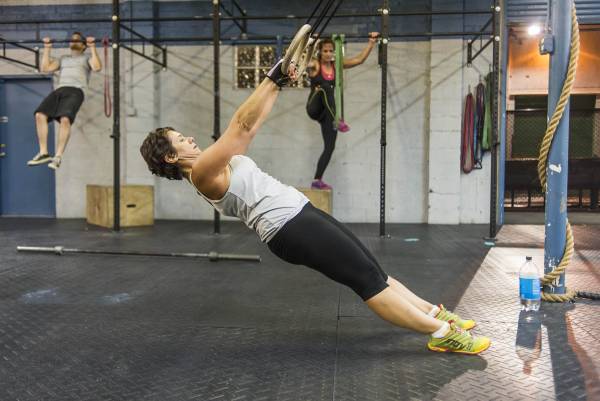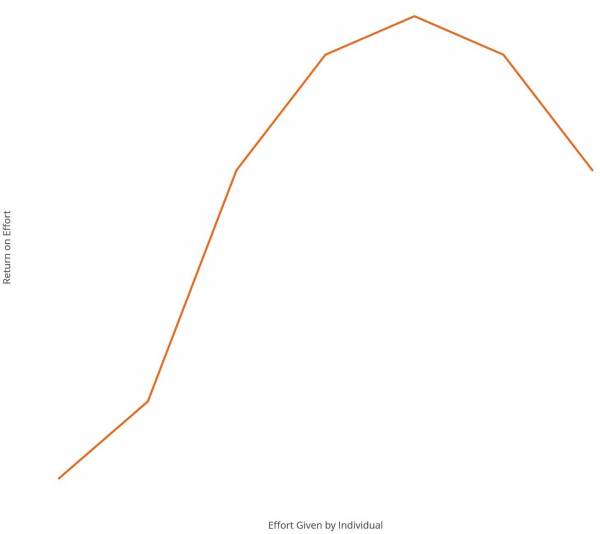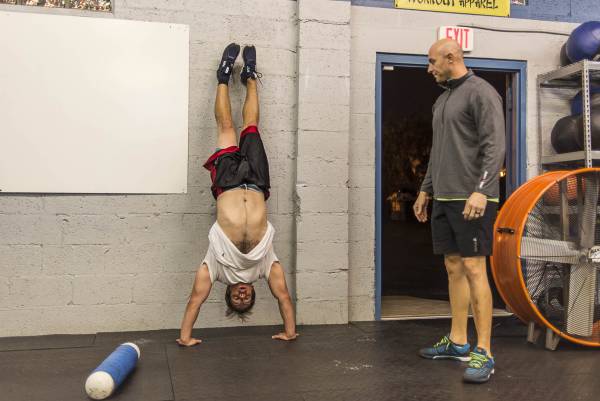One promise of CrossFit is that it will create “optimum physical competence” in the ten physical domains.1 But I am not sure whether this equates to having the upper-body strength of a gymnast, the explosiveness of a sprinter, and the power of an Olympic lifter. I have my doubts the workout of the day would get me to that level.
A more dedicated system with emphasis on better programming might get me there. Max Shank has recently begun to explore a different training system with the same goals in mind. He is attempting to train himself and others to become what he calls, “the ultimate athlete.”
My Athletic Ideals
A few weeks ago I quoted a line from Neal Stephenson about being the baddest motherf@$cker. The goal of that article was to say you don’t need to dream about being a superhero – you can become one.
As part of my quest to be my own superhero, I am working toward the following ideals:
- Be as in control and as strong as a gymnast
- Be as lean, agile, and fast as a sprinter
- Have lower-body strength to pick up heavy objects
- Be able to jump high enough to dunk a basketball (at 6’0”)
- Be flexible like a martial artist
Note: It would be great to hear your ideals, too. Please post them to the comments below.
We Don’t Become the Ultimate by Doing Things Randomly
Recently, I did my first one-arm-one-leg push up as part of the StrongFirst bodyweight certification. I did not get to that level by doing sloppy movements (e.g., burpees, kipping pull ups) as quickly as possible. Rather, I dedicated time to doing front levers, L-sits, heavy weighted pull ups, and tucks. I learned to control my body when it was fresh.
“If a workout requires so much effort that it leads to sloppy movement, then the returns are diminished. Training sloppy movements leads to learning sloppy movements.”
Similarly, I don’t do twenty-minute endurance workouts with a bunch of random movements. Rather, I go about building my endurance efficiently using Tabata or Burgomaster types of workouts. For every goal, I develop a precise plan to obtain it. Max Shank is working on such a program with his athletes.

Economics Models Applied to Fitness
I was surprised to learn that Max Shank has a background in economics. This background came out in our discussion of his new program called Ultimate Athleticism. In this program, he utilizes many economics principles to help people achieve their goals.
Opportunity Costs
One of the key components of Max’s new program is that only the necessary components are used. Athletes have a limited amount of time. Therefore, there are opportunity costs to each movement. For every movement you choose, you are giving up the opportunity to do something else. If you are doing burpees for time, this choice takes away strength and energy from other movements. Thus, all movement should have a purpose.
Law of Diminishing Returns
Similarly, as you put in more and more time to an endeavor, there comes a point where your efforts don’t lead to further gain and may even lead to loss. Economists call this the law of diminishing returns.

The Law of Diminishing Returns
If a workout requires so much effort that it leads to sloppy movement, then the returns are diminished. Training sloppy movements leads to learning sloppy movements.
Productive Resources
Max also doesn’t believe in using only one implement for training. If a kettlebell works, then use it. Barbells and bodyweight work best for other movements. Yoga, dance, and ballet are great ways to become more flexible and control the body. You should use whatever resources make you productive.
His Own Craftsperson
It is interesting how Max came about designing this program. Eight years ago, he was unable to do a pull up and was more of an endurance athlete playing soccer. He made a choice to change his training and dedicated time to gymnastics, martial arts, and strength training.
One of the key components of Max’s new program is that only the necessary components are used. Athletes have a limited amount of time. Therefore, there are opportunity costs to each movement.
He made no claims at training Olympic athletes. Olympic athletes need much more specialized training to achieve their goals. Rather, he came up with a system to train people to become pretty good at what he deems important. You can watch for yourself to see the changes Max made.
Have Fun
One of the big components of Max’s program is that people should have fun. Part of having fun is doing varied activities, but it is also about accomplishing goals in a structured manner.
The Workouts
Below is a sample workout based on Max’s formula:
1. Vertical Jumps x 5
2. Warrior Pose 1 x 5 breaths
Followed by twenty minutes to work on the following. Rotate through with as much rest as needed. Each movement should be virtuous.
3. L-Sit to Handstand (Alternative: L-Sit to Tuck or just L-Sits) x 5
4. Deadlift x 3 reps
5. Ballet Style Standing Straight Leg Hip Circle x 5/side
Then, twenty minutes of the following. Rotate through with as much rest as needed. Each movement should be virtuous.
6. Front Lever for 10 seconds x 5
7. Squat x 3 reps
8. Yoga Deep Lunge with Rotation x 5/side
Finisher: 5 rounds:
9. Farmers Carry x 40 meters
10. Sprint x 40 meters

Wrap-Up
The goals of CrossFit and Max Shanks’s programs are admirable. We should be generally physically prepared for many tasks. Both programs work toward these goals in a different manner. Max’s program and workshop are brand new and will probably refine over time. But it has potential as a different system to train people for general physical preparedness.
And that’s a good thing, because alternatives are needed. Many of the CrossFit-style workouts I see focus on making sure people are fatigued fully and souls are crushed. The benefit of having an open system like Max’s is that each affiliate can brew their own recipe.
Do you have your own recipe for creating the ultimate athletes? If so, please tell us about it in the comments below.
Check out these related articles:
- WTF Workouts: Do You Have What It Takes to Complete Them?
- How Training Can Turn You Into a Self-Made Superhero
- GPP Forever: How to Avoid Specialization and Actually Get Fit
- What’s New on Pulse Beat Fit Today
References:
1. CrossFit; The CrossFit Level 1 Training Guide
2. K Burgomaster et al; Similar metabolic adaptations during exercise after low volume sprint interval and traditional endurance training in humans; The Journal of Physiology 156:1 2008.
Photos courtesy of CrossFit Empirical.






